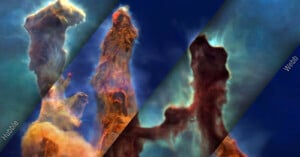
Stunning 3D Visualization Shows Pillars of Creation Like Never Before
NASA released an incredible new look at the Pillars of Creation, showing the celestial phenomenon in an entirely new way.

NASA released an incredible new look at the Pillars of Creation, showing the celestial phenomenon in an entirely new way.
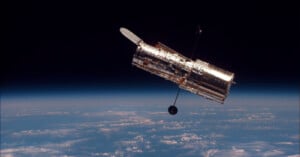
NASA's iconic Hubble Space Telescope has been going into protective "safe mode" after having issues with one of its three remaining gyroscopes forcing it to suspend science operations.
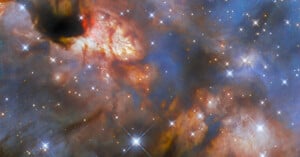
The Hubble Space Telescope (HST) has done it again, delivering a spectacular image of the cosmos that is a veritable smorgasbord of color and detail.
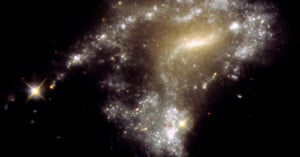
When galaxies collide, they don't necessarily destroy the stars within them. As NASA explains, contrary to popular belief, such a galactic "rough-and-tumble" actually triggers the generation of new stars and -- presumably -- planets.
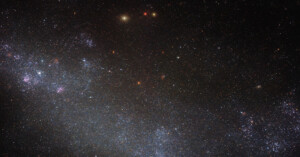
The Hubble Space Telescope's new Picture of the Week shows a remarkably dense field of stars. However, what at first glance looks like just a field of stars, spread somewhat irregularly through the frame, the photo shows a considerable portion of a galaxy.
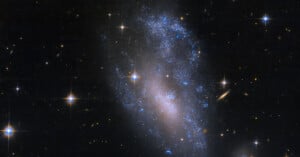
The spiral galaxy UGC 3912 doesn't look like much of a spiral in a new image captured by the Hubble Space Telescope. Its unusual and distorted shape is due to a gravitational encounter with a separate galaxy.
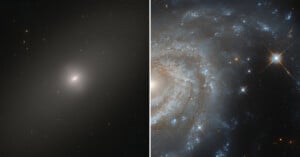
Not to be outdone by the James Webb Space Telescope and its beautiful new nebula image, the Hubble Space Telescope delivered a pair of fresh new space photos this week.
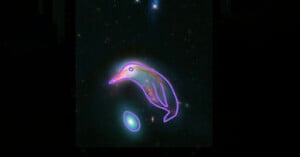
NASA has shared an image of a pair of galaxies that look like a penguin and its egg millions of light-years from Earth.
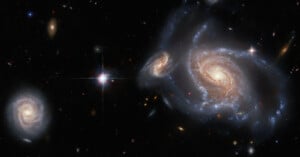
Hubble continues to generate some some outstanding visuals of space and its latest is no exception. However, as much as this photo looks like it portrays a densely packed region of galaxies, reality is not quite so straightforward.
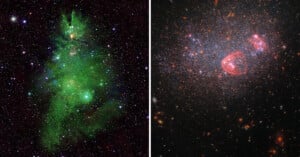
Hubble is celebrating the holidays in style. The Hubble Space Telescope team is shedding light on Christmas-themed celestial objects, including the "Christmas Tree Cluster" and an ornament-shaped galaxy.
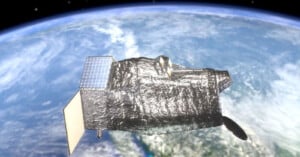
Although the Hubble Space Telescope has had a heck of a run, it cannot last forever. Astronomers have been planning for Hubble's retirement for many years, and a Canadian telescope called CASTOR may be the best candidate to fill the inevitable void in ultraviolet space exploration.
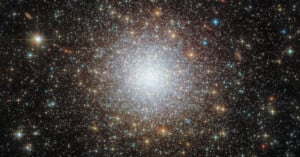
A striking new Hubble image shows NGC 2210, a marvelous globular cluster in the Large Magellanic Cloud (LMC). The ancient cluster is 11.6 billion years old and a satellite galaxy of the Milky Way, meaning that NGC 2210 is gravitationally bound to Earth's galactic home.
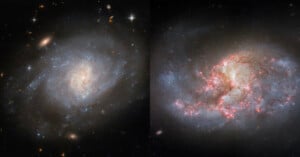
The Hubble Space Telescope continues to amaze with its images of deep space. The European Space Agency (ESA) recently released a pair of new galaxy photos that are a true feast for the eyes.
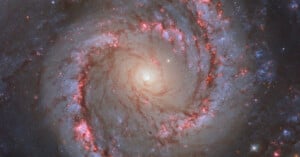
NASA's Hubble Space Telescope is often overshadowed by the shiny new observatory in the room, the James Webb Space Telescope, but its latest photo of a gorgeous spiral galaxy is a nice reminder that ol' reliable can still impress.
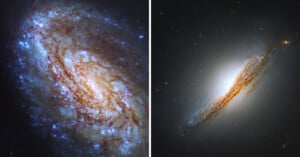
Each day this week, NASA has been publishing a new galaxy image captured by the venerable Hubble Space Telescope. In addition to sharing fascinating information about some of the most interesting galaxies in the universe, each post has also been a visual treat.
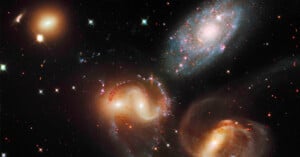
Although the James Webb Space Telescope gets a lot of attention for its impressive technology and many discoveries, the Hubble Space Telescope has remained very busy, and researchers have been using the observatory to perform incredible science.
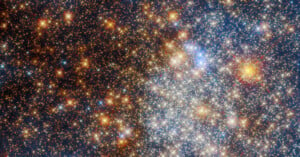
Approximately half a century ago, Turkish-Armenian astronomer Agop Terzan discovered 11 globular clusters. Today, the Hubble Space Telescope views Terzan's clusters in details he could have only dreamed of at the time.
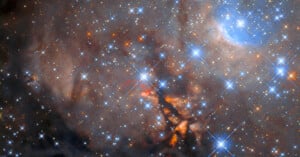
While the James Webb Space Telescope may get the lion's share of the attention these days, the venerable Hubble Space Telescope is still performing vital science and capturing beautiful images.
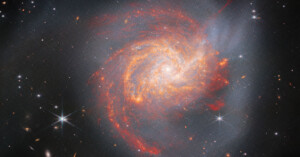
While people in Canada and the United States recently celebrated national holidays with fireworks, the James Webb Space Telescope observed a violent cosmic explosion more than 120 million light-years from Earth.
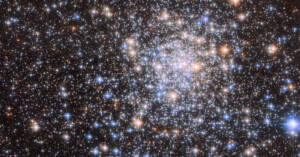
A newly released photo captured by the Hubble Space Telescope shows off a spectacular cluster teeming with bright, glittering stars that is available in greater than 4K resolution.
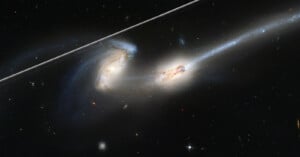
As more satellites are sent into space, images captured by the Hubble Space Telescope are more frequently being spoiled. In March, scientists published a study about the adverse impact of satellites on Hubble observations, and now, Hubble scientists have developed new software to mitigate the issue and remove the troublesome satellites from photos.
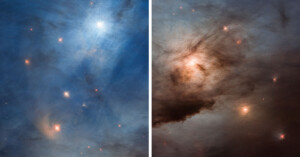
The Hubble Space Telescope is celebrating its 33rd year in orbit around Earth. To celebrate this incredible milestone, the Hubble team has released an incredible photo of a nearby star-forming region, NGC 1333.
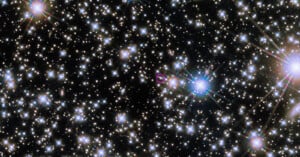
Last October, a burst of gamma-ray light hit Earth that was so strong scientists believe it was the brightest to ever hit human civilization -- dubbing it the BOAT (brightest of all time).
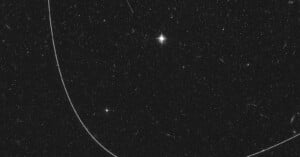
The images taken by the Hubble Space Telescope are increasingly being spoiled by thousands of satellites streaking through the sky.
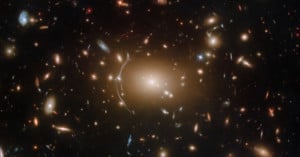
Hubble is getting into the Halloween spirit with its photo of the galaxy cluster Abell 611. This, like all galaxy clusters, is a cosmic mystery to astronomers who aren't sure how it is able to stay together since there doesn't seem to be enough mass to keep it from flying apart.
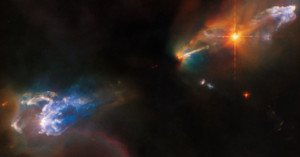
The Hubble Space Telescope has captured a new celestial image that depicts two objects, described as "glowing clumps," that are found around some newborn stars.
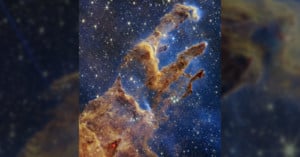
The James Webb Space Telescope (JWST or Webb) has captured a massive and stunningly detailed photo of the Pillars of Creation, a celestial region that gives birth to new stars.
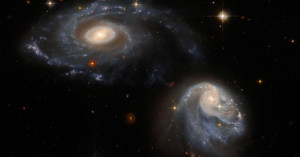
Even though the James Webb Space Telescope tends to steal the space-themed headlines lately, the Hubble Space Telescope is still capturing incredible photos of the universe, including this galactic pair that are so close to one another that they are distorted by each other's gravity.
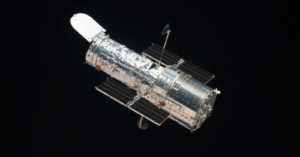
NASA and SpaceX have agreed to investigate if it would be possible to boost the Hubble Space Telescope into a higher, more stable orbit with a Dragon spacecraft in order to extend its lifespan.
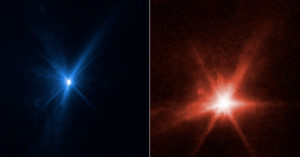
The James Webb Space Telescope and the Hubble Space Telescope both managed to capture detailed images of the impact of the planetary defense Double Asteroid Redirection Test (DART). It is the first time that Webb and Hubble have simultaneously observed the same celestial target.